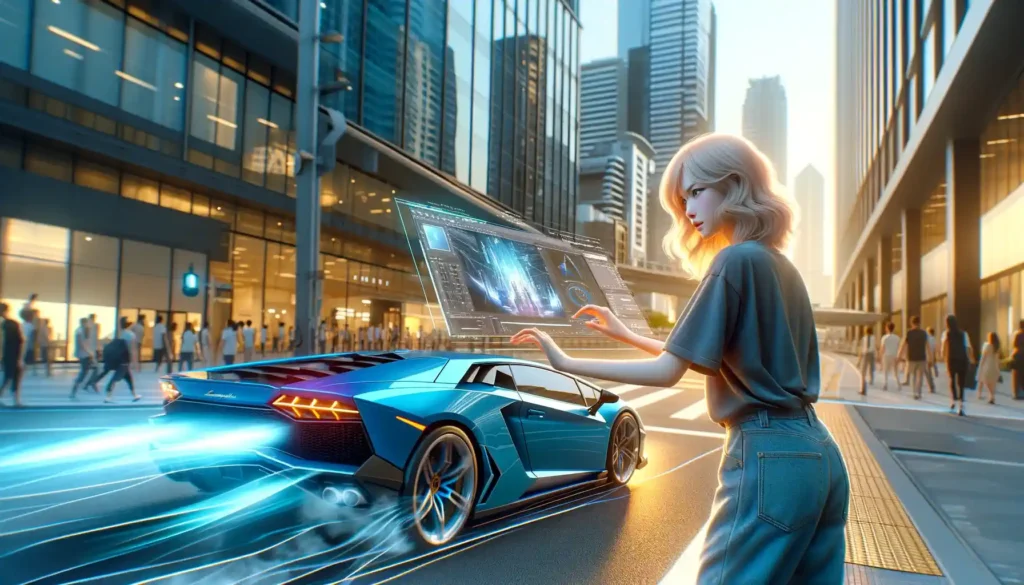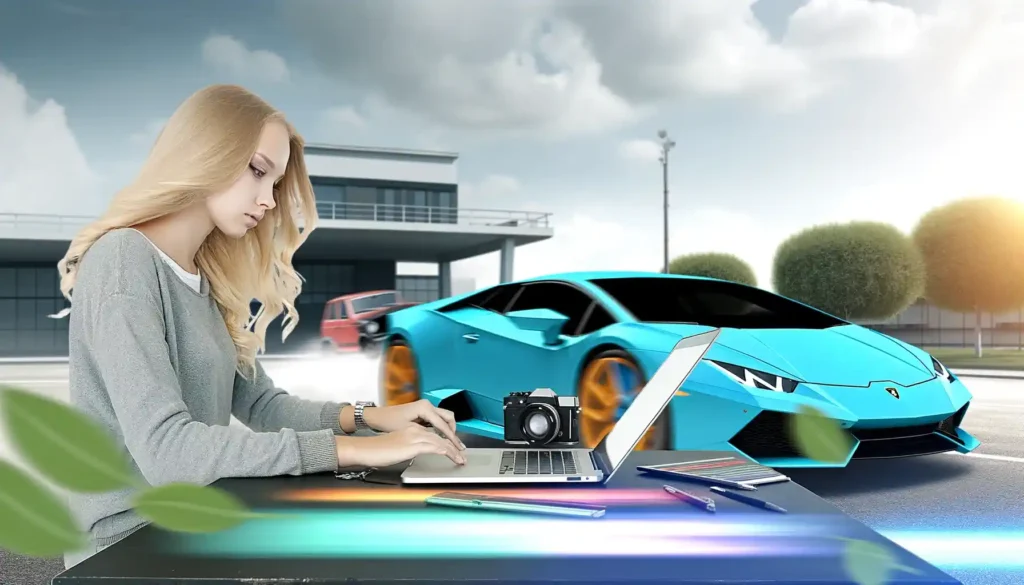How to Use Motion Design for Real Estate Tours: Enhancing Property Showcases with Animation. Offering immersive and engaging property tours can significantly impact a client’s purchasing decision. Motion design is a dynamic tool that can elevate real estate tours beyond traditional video walkthroughs, offering prospective buyers a more interactive and detailed exploration of properties.

This article delves into how real estate professionals can utilize motion design to enhance their property tours, attract more buyers, and ultimately close more deals.
Understanding Motion Design in Real Estate
What is Motion Design? Motion design involves creating animated graphics that bring still images or videos to life. In real estate, this can mean anything from animated overlays on videos to 3D animations that depict the potential of an undeveloped space.
Why Use Motion Design? Motion design can help real estate agents and developers:
- Stand out in a crowded market.
- Provide an enhanced visual experience.
- Clearly communicate the layout and dimensions of a property.
- Show potential future states or modifications of the property.
Integrating Motion Design into Virtual Real EstateTours

1. Animated Floor Plans Static floor plans are informative, but animated versions can guide viewers through the property more intuitively. Using motion to trace room layouts or to move from one floor to another helps clients visualize the space more effectively.
2. Feature Highlight Reels Use short animations to highlight key features of the property, such as renovations, appliances, or unique design elements. These reels can include elements like pop-up text, moving arrows, or highlighted areas to draw attention to specific features.
3. Before and After Transformations For properties that have undergone renovations, motion design can seamlessly show before and after comparisons. This not only showcases the property’s potential but also highlights the tangible improvements made.
4. Area and Amenities Animation Beyond the property itself, animated videos can showcase the neighborhood and nearby amenities. Animated maps with moving icons and labels can indicate schools, parks, shopping areas, and public transport options.
5. Interactive 3D Walkthroughs Advanced motion design can create fully interactive 3D walkthroughs where prospective buyers can navigate through the property as if they were there. This type of animation can be particularly compelling for high-end properties or new developments.
Tools and Technologies
To implement motion design, real estate professionals can use various tools and software, including:
- Adobe After Effects: For creating sophisticated animations and video effects.
- Blender or SketchUp: For 3D modeling and animations.
- Cinema 4D: Known for its powerful rendering capabilities, ideal for creating high-quality animations.
Best Practices for Motion Design in Real Estate Tours

1. Keep It Simple While motion design can be very eye-catching, it’s important to keep animations simple and not overly distract from the actual property features.
2. Focus on Quality High-quality animations reflect professionalism and help build trust with potential clients. Poor quality animations can have the opposite effect, making properties seem less appealing.
3. Optimize for Different Platforms Ensure that your animated tours are optimized for viewing on various devices, including smartphones, tablets, and computers, to reach a wider audience.
4. Test and Gather Feedback Before rolling out new animated tours, test them with a small group of clients for feedback. Use this input to refine the animations to better meet the needs of your target audience.
Successful Case Studies of Motion Design in Real Estate Tours

In the evolving world of real estate marketing, motion design has become a transformative tool. By incorporating animated elements into property tours, real estate professionals can captivate potential buyers more effectively than ever before. This article explores several successful case studies where motion design has been used innovatively to enhance real estate tours, thereby increasing engagement, interest, and ultimately, sales.
Case Study 1: Upscale Condominium Marketing in Manhattan
Background: A real estate developer was looking to market high-end condominiums in a crowded New York City market. The challenge was to stand out in a highly competitive environment where potential buyers are accustomed to luxury and innovation.
Strategy: The developer used motion design to create an immersive 3D walkthrough of the condominiums, complemented by animations that detailed the superior craftsmanship and high-quality materials used in the interiors. Additionally, motion design was used to simulate different times of the day inside the condos, showcasing natural lighting.
Results: The animated tour generated a 50% increase in online bookings for in-person viewings compared to previous traditional video tours. The property sold out 30% quicker than comparable developments in the area.
Lesson: Using motion design to simulate real-life experiences and showcase unique selling points can significantly enhance the attractiveness of high-end properties.
Case Study 2: Revitalizing a Historic Neighborhood
Background: A real estate company was tasked with selling homes in a historic but less known neighborhood. The challenge was to attract buyers who typically preferred more popular locales.
Strategy: The company employed motion design to create a dynamic presentation of the neighborhood, not just the homes. This included animated maps highlighting local amenities, schools, and transport links, and virtual tours of beautifully renovated homes with motion overlays detailing architectural history and modern improvements.
Results: The campaign led to an 80% increase in inquiries from potential buyers and a 25% increase in actual visits to the neighborhood, with many citing the engaging virtual tour as a key influencer in their decision to explore the area.
Lesson: Motion design can effectively communicate the broader appeal of an area, helping buyers visualize lifestyle and community, not just the physical property.
Case Study 3: Selling Off-Plan Properties
Background: Selling properties off-plan can be challenging due to the buyer’s inability to visit a physical property. A developer needed to sell apartments in a yet-to-be-constructed complex.
Strategy: The developer used detailed 3D animations to give potential buyers a virtual tour of the property, including the view from the balconies at different times of the day, interior design options, and amenities like the gym and pool. They also incorporated interactive elements that allowed viewers to choose finishes and furniture layouts.
Results: Pre-sales rates increased by 40% over previous projects sold without the use of motion design. Feedback indicated that the interactive elements and detailed previews significantly influenced purchasing decisions.
Lesson: Interactive motion design can bridge the gap between conceptual and tangible, providing a tangible experience that encourages off-plan purchases.
Case Study 4: Commercial Real Estate with Augmented Reality
Background: A commercial real estate firm needed to lease spaces within a large office complex but found traditional tours inefficient and limited in conveying potential.
Strategy: The firm implemented an augmented reality (AR) tour with motion design elements. This enabled prospective tenants to visualize fully furnished office spaces and view potential layouts through a tablet or smartphone as they walked through the empty spaces.
Results: The AR tours improved lease rates by 35%, with many clients commenting on the ability to see the potential of the space directly influencing their leasing decision.
Lesson: Augmented reality combined with motion design can make real estate tours more practical and tailored to individual client needs, especially in commercial real estate.
Motion Design in Real Estate Tours Conclusion
These case studies illustrate the power of motion design in real estate marketing. By enhancing virtual tours with animated elements, real estate professionals can provide more engaging, informative, and persuasive experiences. Whether showcasing luxury properties, revitalizing neighborhoods, selling off-plan, or leasing commercial spaces, motion design is proving to be an indispensable tool in the digital age of real estate.
Incorporating motion design into real estate tours not only enhances the visual appeal but also provides a more interactive and comprehensive experience for potential buyers. By effectively using animations to highlight key features, demonstrate possibilities, and present an immersive view of the property, real estate professionals can significantly enhance their marketing efforts and improve sales outcomes.

